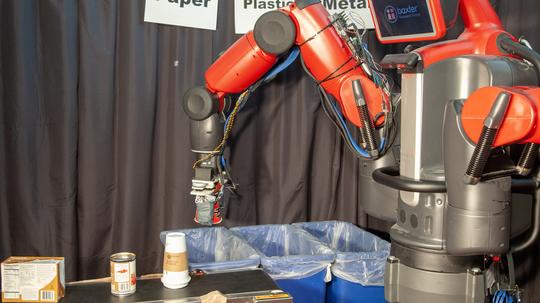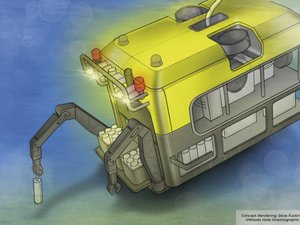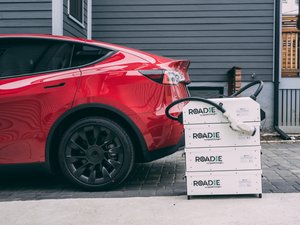
"Recyclers like to do it again and again and again ..." until China refused to process it.
In 2018, China implemented a policy that banned 24 types of scrap including paper, plastic and scrap metal. For decades, the country imported trash from the west that it recycled. But since early 2018, in order to redirect its efforts towards going green and limiting pollutants, China vowed to stop taking materials that contained food scraps and nonrecyclables.
Every year trash companies sift through an estimated 68 million tons of recycling, which is the weight equivalent of more than 30 million cars. And the Chinese ban, unsurprisingly, does not bode well for the U.S.
But as with most things nowadays, robots are stepping in to find a fix.
A recent collaboration between MIT's CSAIL Lab and Yale University has created 'ROCycle,' a robot that uses tactile sensors on its fingertips to detect an object’s size and stiffness to determine whether it can be recycled. For instance, it can reliably distinguish between two identical-looking Starbucks cups made of paper and plastic.
MIT Ph.D. candidate and lead author of the paper Lillian Chin said that the technology makes single stream recycling convenient.
"We're creating a robot with a sense of touch which can sort between objects," Chin said.
Chin said that ROCycle can also be used for sorting recycling at apartment buildings or campuses. Chin noted that MIT's facilities aren't good at recycling because they're too contaminated.
How it works: The robot's gripper uses “strain sensor” to estimate an object’s size, and then uses pressure sensors to measure the force needed to grasp an object. The sensors developed by Yale University helps detect the radius of an object to within 30 percent accuracy, and tell the difference between “hard” and “soft” objects with 78 percent accuracy. The robot's hand is also almost completely puncture-resistant. It was able to be scraped by a sharp lid and punctured by a needle more than twenty times, with minimal structural damage.
"The fundamental sorting technique is pretty standard. For a really large waste stream, there are only 3-5 people per conveyor belt," Chin said. "With ROCycle, this sorting should be easier."
ROCycle can pick one object every six to ten seconds. As for next steps, Chin said that she wants to deploy ROCycle on the MIT campus and make the sensing more robust.








